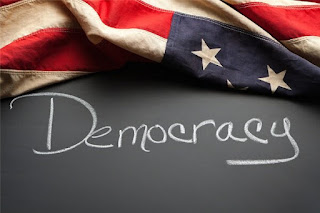Keshmirian, A., Deroy, O, & Bahrami, B.
Cognition
Volume 220, March 2022, 104965
Abstract
Moral judgments have a very prominent social nature, and in everyday life, they are continually shaped by discussions with others. Psychological investigations of these judgments, however, have rarely addressed the impact of social interactions. To examine the role of social interaction on moral judgments within small groups, we had groups of 4 to 5 participants judge moral dilemmas first individually and privately, then collectively and interactively, and finally individually a second time. We employed both real-life and sacrificial moral dilemmas in which the character's action or inaction violated a moral principle to benefit the greatest number of people. Participants decided if these utilitarian decisions were morally acceptable or not. In Experiment 1, we found that collective judgments in face-to-face interactions were more utilitarian than the statistical aggregate of their members compared to both first and second individual judgments. This observation supported the hypothesis that deliberation and consensus within a group transiently reduce the emotional burden of norm violation. In Experiment 2, we tested this hypothesis more directly: measuring participants' state anxiety in addition to their moral judgments before, during, and after online interactions, we found again that collectives were more utilitarian than those of individuals and that state anxiety level was reduced during and after social interaction. The utilitarian boost in collective moral judgments is probably due to the reduction of stress in the social setting.
Highlights
• Collective consensual judgments made via group interactions were more utilitarian than individual judgments.
• Group discussion did not change the individual judgments indicating a normative conformity effect.
• Individuals consented to a group judgment that they did not necessarily buy into personally.
• Collectives were less stressed than individuals after responding to moral dilemmas.
• Interactions reduced aversive emotions (e.g., stressed) associated with violation of moral norms.
From the Discussion
Our analysis revealed that groups, in comparison to individuals, are more utilitarian in their moral judgments. Thus, our findings are inconsistent with Virtue-Signaling (VS), which proposed the opposite
effect. Crucially, the collective utilitarian boost was short-lived: it was only seen at the collective level and not when participants rated the same questions individually again. Previous research shows that moral change at the individual level, as the result of social deliberation, is rather long-lived and not transient (e.g., see Ueshima et al., 2021). Thus, this collective utilitarian boost could not have resulted from deliberation and reasoning or due to conscious application of utilitarian principles with authentic reasons to maximize the total good. If this was the case, the effect would have persisted in the second individual judgment as well. That was not what we observed. Consequently, our findings are inconsistent with the Social Deliberation (SD) hypotheses.








